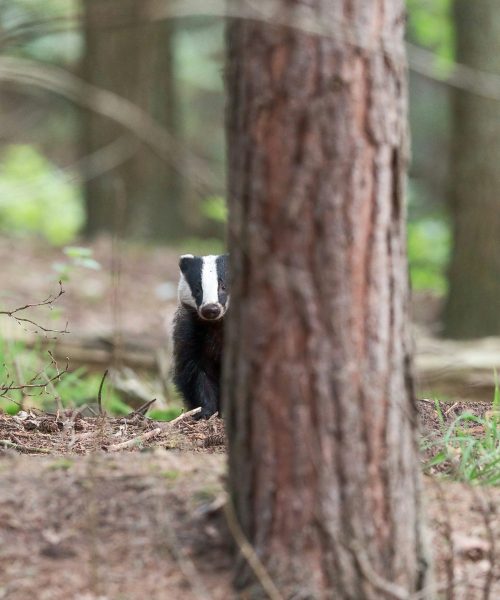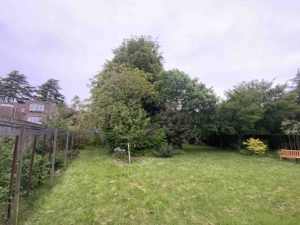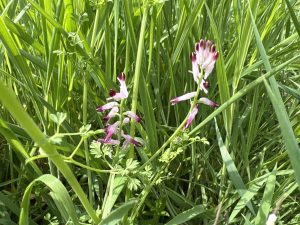Badger Surveys for Planning & Development
Clear, compliant and programme-focused badger surveys designed for real construction environments.
Do you need an Badger Survey?
You may need a badger survey if your site includes woodland edges, hedgerows, scrub, rough grassland, earth banks or if a PEA has flagged badger potential. Development close to any active sett requires clear evidence before planning can progress.
What is an Badger Survey?
A badger survey confirms sett locations, type of sett, activity levels and suspected pathways. It provides the evidence planners need to validate applications and defines the mitigation required to keep works lawful and predictable.

Early Signs a Badger Survey is Needed
LPAs typically request evidence when:
- field signs appear (paths, latrines, prints, snuffle holes)
- sett-like openings are found in banks or woodland edges
- development encroaches on hedgerows, scrub or semi-natural habitat
- PEAs flag potential badger activity
- habitat connectivity runs through or across the site
- the project footprint is large, rural or edge-of-settlement
Early confirmation avoids programme friction, redesigns and licensing delays.

What We Deliver
| Service | Purpose | Outcome |
|---|---|---|
| Initial Badger Check | Early walkover to confirm risk and identify sett features. | Fast clarity before design commits. |
| Full Badger Survey | Sett mapping, field signs and territory assessment. | Evidence suitable for planning and mitigation design. |
| Activity Monitoring (Camera / Field Signs) | Determine usage, status and activity levels. | Robust data for planning authorities and licensing. |
| Mitigation Strategies & Method Statements | Keep works lawful where setts or routes are present. | Practical, construction-friendly measures. |
| Licensing Support | Where works may disturb or close a sett. | Prepared applications with realistic timelines. |
A practical, proportionate, planning-ready route for development.
How it Works

Scope & Schedule
Send your site details and programme. We confirm the correct level of survey.

Fieldwork
Walkovers, sett assessments, camera deployment and activity checks depending on risk

Reporting
Planning-ready reporting with impact assessment, mitigation options and clear timelines for designers and site teams.
Timing & Survey Windows
Early engagement helps avoid licensing delays and prevents mid-programme disruption.
Main Survey Season
April to September
Walkover
Year-round
Specialist Surveys
Generally May to August
What You Receive:
- sett mapping and activity assessment
- classification of sett types (main, annex, subsidiary, outlier)
- impact assessment for planning
- mitigation and method statement options
- licensing route guidance (only if required)
- clear, practical instructions for construction teams
Evidence planners rely on. Steps your project team can deliver.
Why Developers Choose ProHort:
- programme-first delivery
- practical, proportionate advice
- fast mobilisation where feasible
- reporting structured for planning officers and contractors
- nationwide capability
- straight, transparent communication
Legal Compliance & Planning risk
Badgers and their setts are protected under the Protection of Badgers Act 1992. Development near an active sett without proper evidence can trigger enforcement, stoppages and licensing requirements.
Missing or inadequate surveys can lead to:
- planning refusal or validation delays
- stop-work instructions if setts are found during works
- legal offences for disturbing a sett
- delays caused by seasonal licensing restrictions
- unplanned design changes late in the programme
Relevant legislation:
- Protection of Badgers Act 1992
- Wildlife & Countryside Act 1981
- NPPF biodiversity requirements
- Environment Act 2021 (BNG integration)
Our role is to keep everything compliant, predictable and aligned to your build sequence.
Your Next Step
Need an invertebrate survey? We’ll confirm what’s required and align survey windows with your programme.
Phone: 0800 494 7479
Email: [email protected]
Case Note
Badger Survey FAQs
Do I need a badger survey for planning?
You may need one if setts, field signs or suitable habitats such as woodland edges, hedgerows or scrub are present, or if your PEA suggests badger activity.
When can badger surveys be completed?
Sett checks can be done year-round. Activity monitoring is best Feb–April and Sept–Oct. Camera trapping is suitable in most months.
What happens if a sett is found?
Works near setts may require buffers, method statements or a licensed mitigation strategy. We determine the correct approach based on risk.
Can badgers delay construction?
Yes. Working too close to a sett without evidence or method statements can result in stop-work notices or legal issues.
Do all sites with a sett need a licence?
No. Licensing is only required if works may disturb, block or destroy a sett. Many sites can proceed with proportionate mitigation.
How long do badger surveys take?
Initial assessments take 1–3 days. Activity monitoring may require several weeks depending on scope and planning needs.
Can you attend site urgently if a sett is discovered during works?
Yes. Rapid response is available, and early intervention prevents compliance risks.
What evidence do planners expect?
Sett maps, field signs, movement routes, impact assessments and clear mitigation or licensing pathways if required.
Will this affect BNG?
Badger use can influence habitat retention, access routes and enhancement strategy. We highlight any implications for design teams early.
What do you need to quote?
A postcode or red line plan, brief description of works, and any PEA or planner notes.



